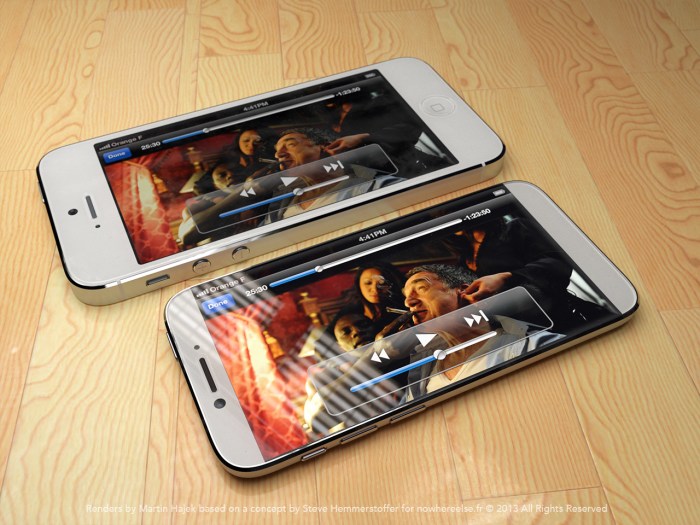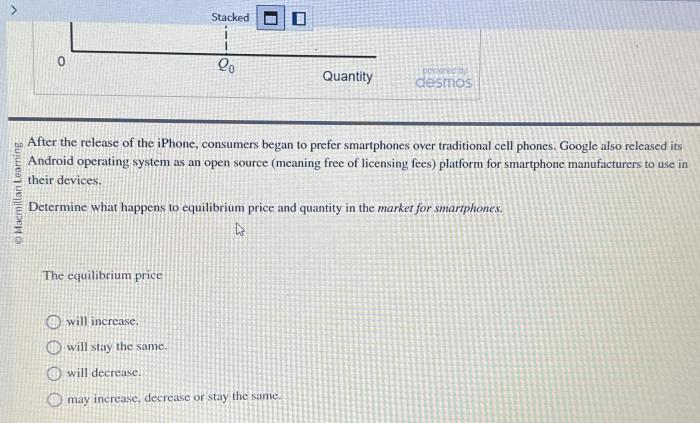Historical Context
In early 2014, the smartphone market was in a state of rapid evolution. Android was rapidly gaining market share, challenging Apple’s dominance. Samsung was a major competitor, known for its large-screen devices and innovative features. However, Apple remained a strong force, known for its sleek design, user-friendly interface, and strong ecosystem.
Apple’s product release cycle at the time was well-established. They typically released new iPhone models in the fall, usually in September. This pattern had been consistent for several years, creating anticipation and excitement among consumers.
iPhone 5s and iPhone 5c
The iPhone 5s and iPhone 5c, released in September 2013, were Apple’s latest flagship models. The iPhone 5s was a powerful device with a 64-bit A7 processor, a new fingerprint sensor called Touch ID, and an improved camera. The iPhone 5c, on the other hand, was a more affordable option, featuring a colorful polycarbonate design and a lower-spec processor.
These two models were seen as Apple’s attempt to cater to different segments of the market. The iPhone 5s was aimed at high-end users who demanded the latest technology, while the iPhone 5c was designed to attract price-conscious buyers.
iPhone 6’s Key Features and Innovations
The iPhone 6 marked a significant leap forward for Apple’s flagship smartphone, introducing a host of new features and innovations that set the stage for future models. From its redesigned aesthetics to its enhanced performance, the iPhone 6 offered a compelling upgrade for users seeking a more immersive and powerful mobile experience.
Design and Display
The iPhone 6 underwent a major design overhaul, featuring a larger display, a thinner profile, and a more refined aesthetic. The introduction of larger screen sizes, specifically the 4.7-inch iPhone 6 and the 5.5-inch iPhone 6 Plus, catered to users who desired a more expansive viewing experience for multimedia content, gaming, and productivity tasks. The iPhone 6 also adopted a thinner and lighter design, achieving a sleek and modern look.
Processing Power and Performance
The iPhone 6 was powered by the Apple A8 chip, a 64-bit processor that delivered significant performance improvements over its predecessor. The A8 chip boasted a faster clock speed and a more efficient architecture, resulting in faster app launches, smoother multitasking, and enhanced gaming capabilities. The iPhone 6 also featured an improved graphics processing unit (GPU), which contributed to enhanced visuals and a more immersive gaming experience.
Camera Capabilities
The iPhone 6 featured an 8-megapixel iSight camera with a new sensor and image signal processor (ISP), resulting in improved image quality, particularly in low-light conditions. The camera also introduced features like Focus Pixels, which enabled faster autofocus, and a new burst mode that allowed users to capture a rapid sequence of images. The front-facing FaceTime HD camera was also upgraded to 1.2 megapixels, offering improved video calls and selfies.
Battery Life
The iPhone 6 featured a larger battery than its predecessor, offering improved battery life. Apple claimed that the iPhone 6 provided up to 14 hours of talk time and up to 10 days of standby time. The iPhone 6 also included a new low-power mode that extended battery life by reducing power consumption for certain features.
Specifications
| Feature | Specification |
|—|—|
| Processor | Apple A8 chip |
| RAM | 1 GB |
| Storage Options | 16 GB, 64 GB, 128 GB |
| Display Resolution | 1334 x 750 pixels (iPhone 6), 1920 x 1080 pixels (iPhone 6 Plus) |
Impact and Reception of the iPhone 6 Launch: Iphone 6 Predicted To Launch Mid 2014 According To Analyst
The iPhone 6 launch in September 2014 was a monumental event in the tech world, marking a significant step forward in Apple’s smartphone strategy. The anticipation was palpable, with fans eagerly awaiting the unveiling of the new design and features. The launch generated immense buzz and had a profound impact on the smartphone market and Apple’s overall performance.
Initial Reviews and Sales Figures
Initial reviews of the iPhone 6 were overwhelmingly positive, praising its larger screen size, improved camera, and sleek design. Critics lauded the phone’s performance, battery life, and the integration of new features like Apple Pay. The launch was a commercial success, with Apple reporting record-breaking sales figures. The iPhone 6 and iPhone 6 Plus quickly became the best-selling smartphones in the world, surpassing previous models in terms of popularity and market share.
Impact on the Smartphone Market, Iphone 6 predicted to launch mid 2014 according to analyst
The iPhone 6’s success had a ripple effect across the smartphone market. Its larger screen size and improved design influenced other manufacturers to adopt similar features. The launch of the iPhone 6 Plus, with its phablet-sized screen, also helped to popularize the larger screen format, paving the way for other manufacturers to release their own phablet devices. The iPhone 6’s success also fueled the trend towards premium smartphones with advanced features and sleek designs.
Influence on Future Smartphone Development
The iPhone 6’s innovative features and design influenced future smartphone development in several ways. Its use of a larger screen size, improved camera technology, and sleek design became industry standards. The iPhone 6’s introduction of Apple Pay also played a significant role in the adoption of mobile payment systems by other manufacturers. The iPhone 6’s success demonstrated the value of a premium user experience, leading other manufacturers to focus on providing a more intuitive and user-friendly interface.
Long-Term Significance
The iPhone 6 marked a pivotal moment in the evolution of the smartphone industry, setting new standards for design, performance, and user experience. Its impact extended beyond its initial release, shaping the trajectory of Apple’s own product line and influencing the broader mobile landscape.
The iPhone 6’s introduction of a larger display size, coupled with its sleek design and powerful hardware, revolutionized the way people interacted with their smartphones. This shift towards larger screens paved the way for a new era of mobile entertainment and productivity, influencing the design of subsequent smartphones across the industry.
Influence on Subsequent Apple Products
The iPhone 6’s design principles and features laid the foundation for future Apple products. Its larger display size, which was initially met with skepticism, became a defining characteristic of Apple’s flagship smartphones, with the iPhone 6 Plus further pushing the boundaries of screen real estate.
The iPhone 6’s design, characterized by its rounded edges and premium materials, influenced the design of subsequent iPhones, as well as other Apple products like the iPad and Apple Watch. The focus on user experience and intuitive design, exemplified by the iPhone 6’s features like Apple Pay and the improved camera system, continued to shape the development of Apple’s product ecosystem.
Timeline of iPhone Development
The iPhone 6’s release marked a significant milestone in the evolution of the iPhone. The following timeline highlights the key moments in the iPhone’s development, showcasing the iPhone 6’s place within this historical context:
- 2007: The first iPhone is released, introducing the world to the touchscreen smartphone.
- 2008: The iPhone 3G is released, bringing 3G connectivity and GPS to the iPhone.
- 2009: The iPhone 3GS is released, featuring a faster processor and a better camera.
- 2010: The iPhone 4 is released, introducing a revolutionary Retina display and a sleek new design.
- 2011: The iPhone 4S is released, featuring Siri, Apple’s voice assistant.
- 2012: The iPhone 5 is released, introducing a larger display and a thinner design.
- 2013: The iPhone 5s and iPhone 5c are released, featuring improved hardware and a new color option.
- 2014: The iPhone 6 and iPhone 6 Plus are released, introducing larger displays and a new design language.
- 2015: The iPhone 6s and iPhone 6s Plus are released, featuring 3D Touch and improved camera technology.
- 2016: The iPhone 7 and iPhone 7 Plus are released, featuring a new design, water resistance, and a dual-lens camera.
- 2017: The iPhone 8 and iPhone 8 Plus are released, featuring wireless charging and an improved camera system.
- 2018: The iPhone XS, iPhone XS Max, and iPhone XR are released, featuring OLED displays and improved performance.
- 2019: The iPhone 11, iPhone 11 Pro, and iPhone 11 Pro Max are released, featuring a triple-lens camera system and a new design.
- 2020: The iPhone 12, iPhone 12 Mini, iPhone 12 Pro, and iPhone 12 Pro Max are released, featuring 5G connectivity and a new design.
The iPhone 6’s introduction of larger displays and its emphasis on user experience laid the groundwork for the continued evolution of the iPhone. Its impact can be seen in the design and features of subsequent iPhones, as well as in the broader smartphone industry.
Iphone 6 predicted to launch mid 2014 according to analyst – The iPhone 6’s arrival in 2014 marked a turning point for Apple and the smartphone industry. It was a testament to the company’s ability to adapt and innovate, and its impact on the market was undeniable. The larger screen size, improved camera, and sleek design became the new standard for smartphones, influencing the direction of the entire industry. Looking back, the iPhone 6 wasn’t just a phone, it was a statement. It signaled that Apple was ready to embrace change and continue pushing the boundaries of what a smartphone could be.
Analysts predicted the iPhone 6 would launch in mid-2014, but while we wait for that, you can gear up for some serious gaming with the playstation gear store up and running now. Who knows, maybe the iPhone 6 will have a killer gaming app to go with your new PS4 controller!
 Standi Techno News
Standi Techno News

